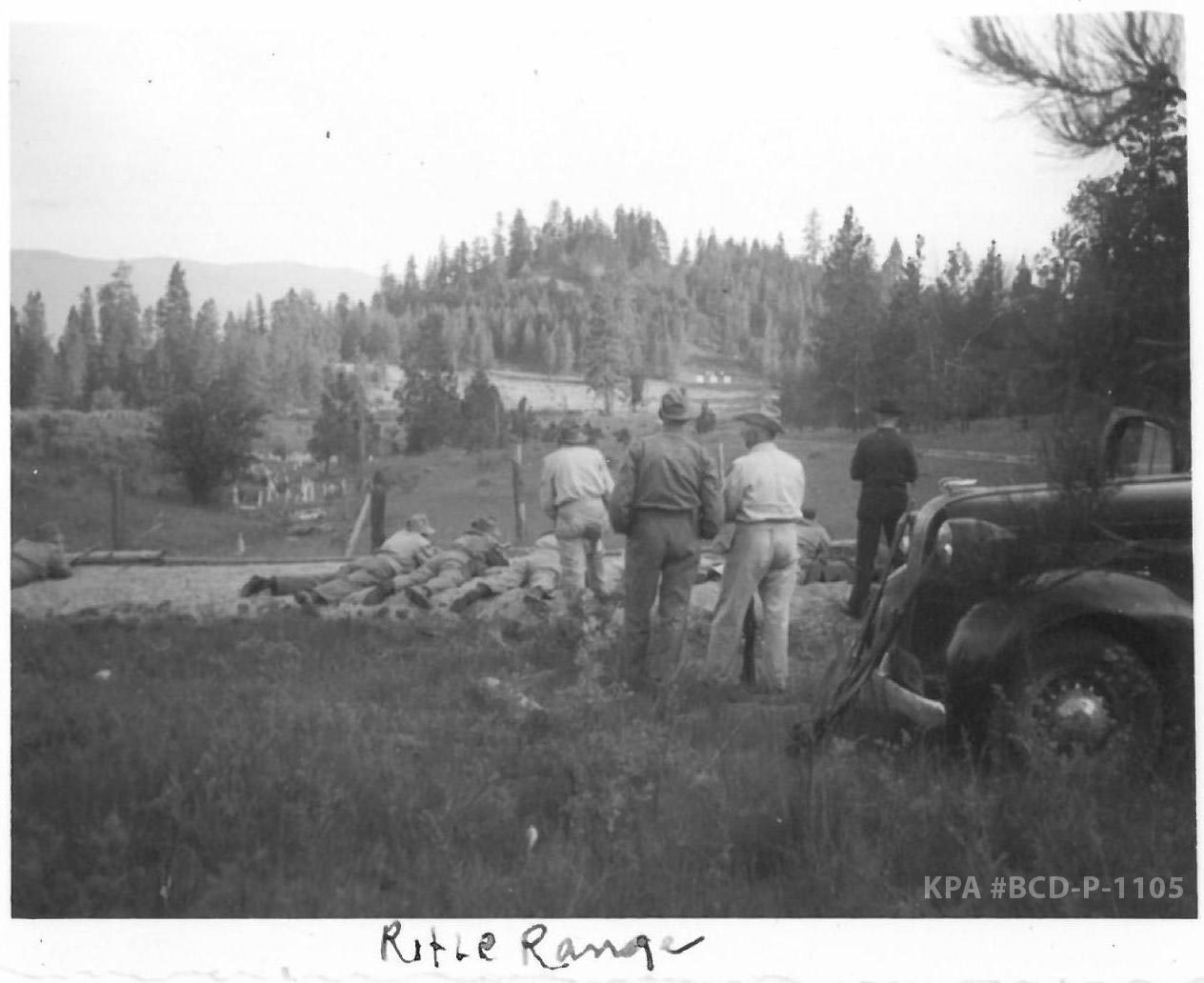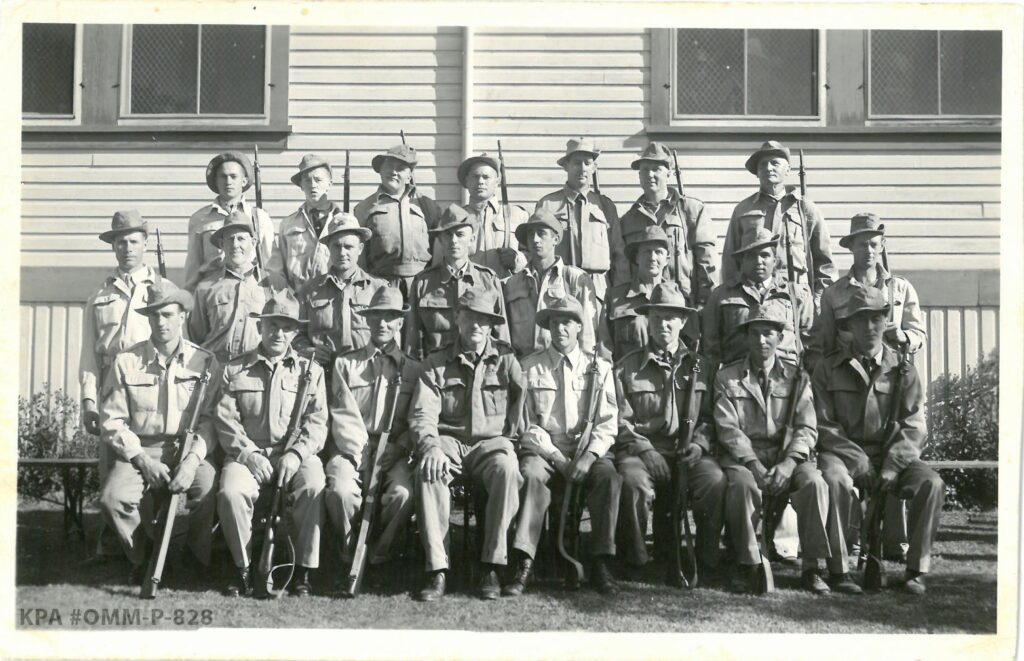Pacific Coast Militia Rangers
A brief history by M. Vincent Bezeau
Patriotic civilians formed ‘home defence ‘ or ‘home guard’ units in several Okanagan Valley municipalities early in the Second World War. Operating outside of Canadian law and lacking military co-operation, the units withered or folded, though they did inspire the Pacific Coast Militia Rangers.
After the declaration of war with Japan in December 1941, Canadian military authorities reorganized Pacific Coast defence in greater geographical and organizational depth. Beginning in February 1942, they tapped into civilian defence enthusiasm to create light, irregular units of Reserve Militia, the Pacific Coast Militia Rangers (PCMR), which knew the lay of the land and could act as scouts for the widely-dispersed army. Members were drawn from among men ineligible for active or reserve army service. Recruiting began in March 1942. Within a month there were 115 companies and over 14,000 men enlisted, and both these numbers grew as enrolment continued.

Kelowna/Ellison No. 1 Detachment,100 Company, PCMR on East Kelowna rifle range with Lee-Enfield rifles. (Archive: BCD-P-1105)
Rangers received a rifle, ammunition, and an armband as simple identification. Later, they received a basic, unique uniform of slouch hat and khaki, water-resistant jacket and trousers. Priority in organization, clothing and equipment went to units west of the Cascade Mountains, closest to the perceived threat.
The Pacific Coast Militia Rangers disbanded in the fall of 1945 after Japan’s surrender. The current Canadian Rangers of the Canadian Forces draw on the heritage of the PCMR.

Ellison district No. 1 Detachment, 100 Company, PCMR.
(Archive: OMM-P-828)
L-R front row: Elwyn Cross, x, Jack Scott, x, Elish Monford, x, x, Ernest Stafford.
L-R 2nd row: Bill Bulman, Gus MacDonnell, Sam Lee, Jack Johnson, Walter Wouk (Auch/k?), Harry Johnson, Jaginder Basran, x.
L-R 3rd row: x, x, Ralph Bell, Aubrey Wanless, Art Teather, Lawrence McKenzie.
Okanagan Valley PCMR Companies
No 46 Company
Peachland, with detachment in Westbank
No 48 Company
Oliver, with detachments in Osoyoos and Testalinda
No 51 Company
Armstrong, with detachment in Hullcar
(See also No. 116 Company, Enderby)
No 67 Company
Vernon, with detachments in Coldstream, Lumby, and Oyama (now part of Lake Country)
No 71 Company
Penticton, with detachment in Kaleden
No 80 Company
Princeton, with detachments in Keremeos and Hedley.
(The company was in the Similkameen Valley, but is included in this list because of Keremeos’ relationship to The British Columbia Dragoons, the Okanagan Valley’s regiment)
No 87 Company
West Summerland (now Summerland), with detachment in Trout Creek
No 100 Company
Kelowna, with detachments in Glenmore-Benvoulin (now part of Kelowna), Okanagan Mission-East Kelowna (now part of Kelowna), and Rutland-Winfield (Rutland is now part of Kelowna, and Winfield is part of Lake Country)
No 116 Company
Enderby, with detachment in Hullcar
(See also No. 51 Company, Armstrong)
